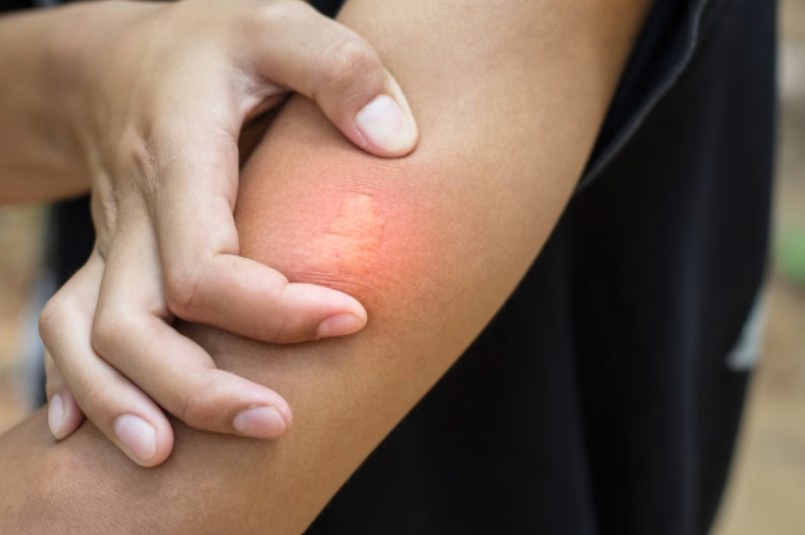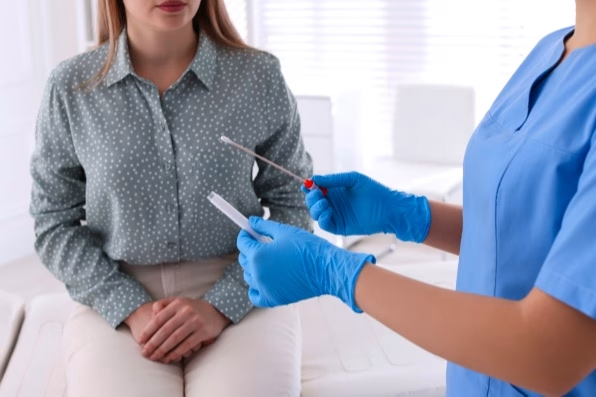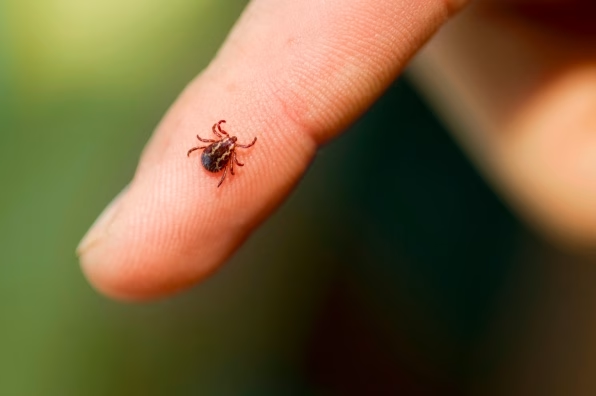
It happens in an instant: you're enjoying a picnic, walking barefoot through the grass, or gardening in your backyard, and suddenly, you feel a sharp, burning pain. You've been stung by a bee. While most bee stings cause only momentary pain and swelling, some can lead to severe reactions that require immediate medical attention.
During the warmer months in Massachusetts, bee stings are common, and AFC Urgent Care Haverhill regularly treats patients with mild to moderate reactions to stings. Whether you're unsure how to handle a sting at home or wondering when to seek medical attention, this guide will provide clear steps and signs to watch for. Find an AFC Urgent Care location near you.
Why Bees Sting
Bees don't typically sting unless they feel threatened. When they do, they inject venom through a barbed stinger into the skin. This venom triggers an immune response, resulting in redness, pain, and swelling.
In most cases, the body handles the venom on its own. However, individual reactions vary, and some people are allergic or become increasingly sensitive over time.
Bees vs. Wasps and Hornets
- Bees (especially honeybees) lose their stinger and die after stinging
- Wasps and hornets can sting multiple times and inject more venom
- Reactions can vary depending on the type of insect
Understanding how to respond promptly can help reduce discomfort, prevent complications, and keep you safe throughout the summer.
How to Treat a Bee Sting at Home: Step-by-Step
Most bee stings can be treated safely at home if the reaction is mild and localized. Here's how to do it:
Step 1: Remove the Stinger Quickly
- Look for a small black dot at the sting site. This is the stinger
- Use the edge of a credit card or fingernail to scrape it off
- Avoid squeezing with tweezers, which can push more venom into your skin
Step 2: Clean the Area
- Wash the sting site with soap and water to reduce infection risk
- Pat dry with a clean towel
Step 3: Reduce Swelling and Pain
- Apply a cold compress or ice pack (wrapped in cloth) for 15–20 minutes
- Elevate the area if possible, especially if it's on a hand or foot
Step 4: Relieve Itching and Discomfort
- Use over-the-counter antihistamines like diphenhydramine (Benadryl)
- Apply hydrocortisone cream or calamine lotion to ease itching
- Take ibuprofen or acetaminophen for pain if needed
For most people, symptoms typically improve within a few hours and completely resolve within 1–3 days.
Normal vs. Abnormal Reactions
Most reactions to bee stings are mild to moderate, but some can be severe or even life-threatening. Here's how to tell the difference:
Mild Reaction (Common)
- Immediate sharp pain or burning
- Redness and slight swelling around the sting
- Itching at the sting site
You can typically manage this at home.
Moderate Reaction
- Swelling extends beyond the sting site (e.g., entire arm or leg swells)
- Increased redness and tenderness over several hours
- Larger welt or lump at the sting area
They may need a medical evaluation if swelling continues or signs of infection appear.
Severe Allergic Reaction (Anaphylaxis)
- Difficulty breathing or swallowing
- Swelling of the face, lips, tongue, or throat
- Rapid heartbeat or drop in blood pressure
- Dizziness, fainting, or confusion
- Nausea, vomiting, or abdominal cramping
- Hives or a widespread rash
This is a medical emergency. Call 911 or visit the nearest AFC Urgent Care location in Haverhill. See all locations here.
Risk Factors for Severe Reactions
While anyone can react severely, some people are at higher risk, including:
- People with a known bee sting allergy
- Individuals who've had a previous severe reaction
- Those with asthma or other respiratory conditions
- Children and older adults (who may not verbalize symptoms as easily)
If you or someone in your family has a history of anaphylaxis or carries an EpiPen, always be prepared during outdoor activities.
What About Infection
Sometimes, a bee sting can lead to secondary infection, especially if the area is scratched excessively or not cleaned well.
Signs of Infection Include:
- Increasing redness, warmth, or pain after 48 hours
- Pus or yellow drainage
- Fever or chills
- Red streaks moving outward from the sting site
If you suspect an infection, visit your nearest AFC Urgent Care location in Haverhill for evaluation and antibiotics, if needed.
When to Visit AFC Urgent Care Haverhill
You should walk into the AFC if:
- Swelling becomes severe or spreads beyond the sting
- Pain or itching is intense and not responding to treatment
- Do you experience any symptoms of a mild allergic reaction, like hives or throat tightness
- Do you think the sting site may be infected
- You're stung multiple times by a wasp or hornet swarm
We treat:
- Bee, wasp, and hornet stings
- Allergic reactions (mild to moderate)
- Infected or slow-healing sting sites
- Pediatric stings (kids often react more dramatically)
Walk in anytime; no appointment is needed. Open 7 days a week. Find your closest AFC location in Massachusetts.
How to Prevent Bee Stings This Summer
Prevention goes a long way, especially during peak bee activity in Massachusetts (typically May through September).
Tips to Avoid Bee Stings:
- Don't walk barefoot on grass or near flowers
- Avoid wearing bright colors or floral patterns
- Skip heavily scented lotions or perfumes outdoors
- Keep food and sugary drinks covered
- Be cautious when mowing lawns or trimming bushes
- Shake out clothes and towels left outside
If you see a bee, stay calm and move away slowly. Sudden movements can provoke a sting.
Special Considerations for Kids
Children are curious and often don't understand the danger. That's why stings in kids are common and frequently distressing.
If your child is stung:
- Stay calm and reassure them
- Follow the same home care steps
- Watch closely for signs of an allergic reaction
- Keep an allergy plan in place if your child has a known sensitivity
Parents, if you're not sure about the severity, it's better to err on the side of caution. Visit AFC Urgent Care Haverhill for fast pediatric evaluation.
Bee stings are a part of summer life, but knowing how to respond makes all the difference. From removing the stinger properly to knowing the signs of an allergic reaction, these simple steps can prevent complications and even save lives.
At AFC Urgent Care Haverhill, we're here to help with fast, expert care for insect stings, rashes, allergic reactions, and more. Whether it's your child, a family member, or yourself, visit your local clinic today and receive the care you need without waiting in the ER.


